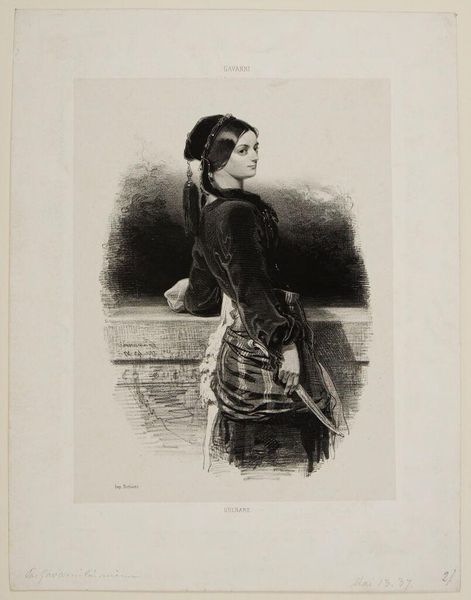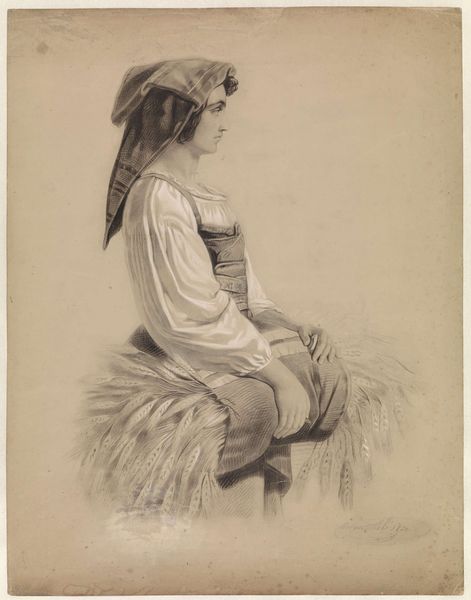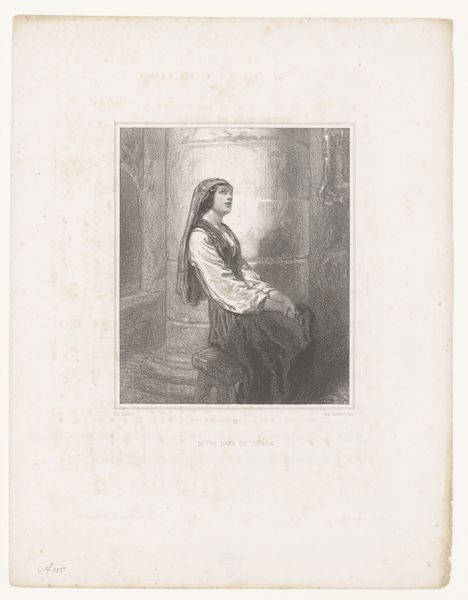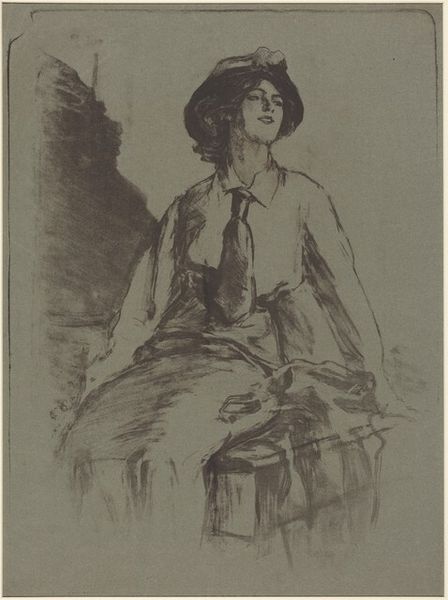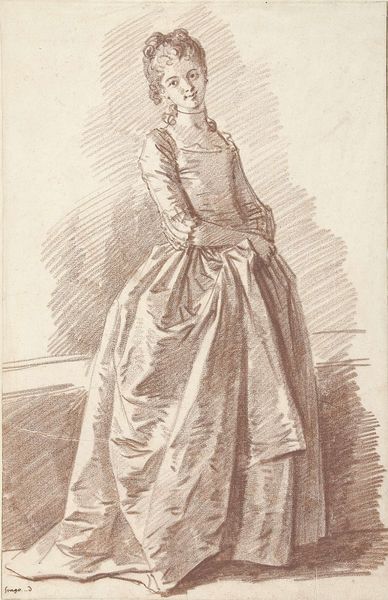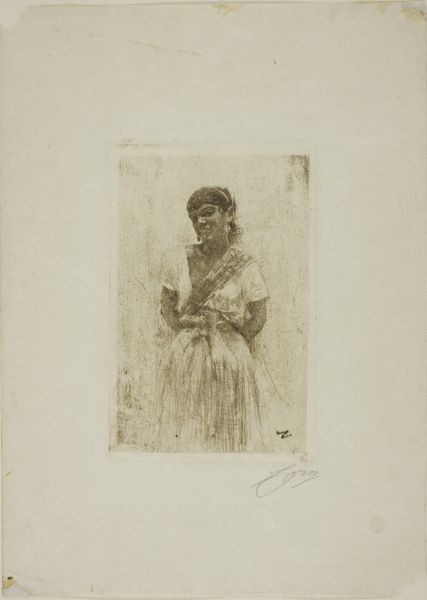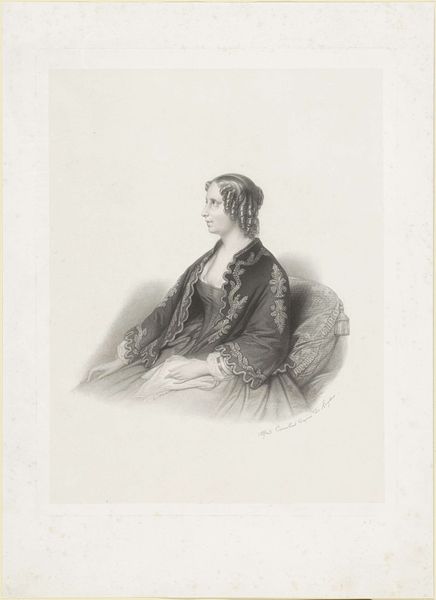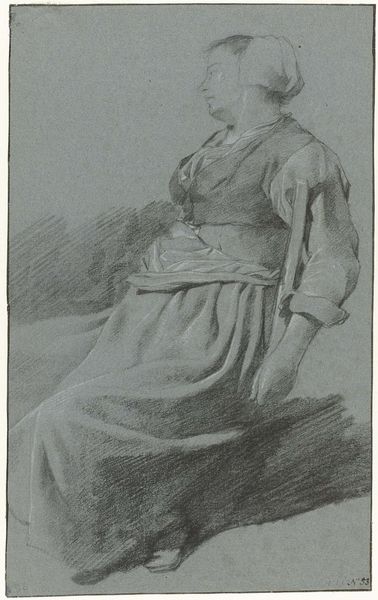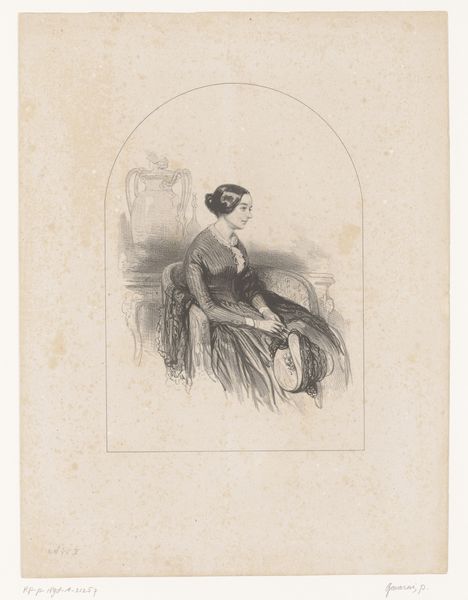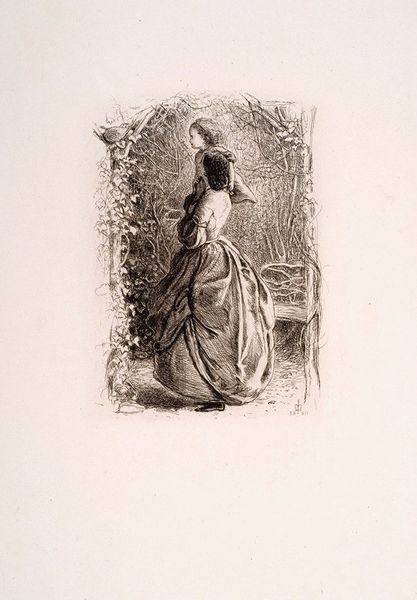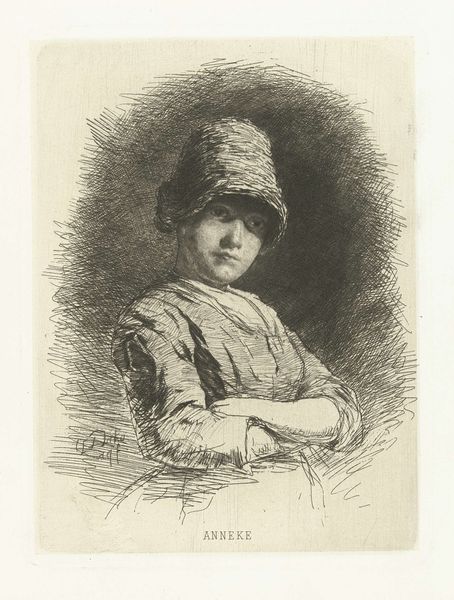
drawing, lithograph, print, paper
#
portrait
#
drawing
#
lithograph
# print
#
figuration
#
paper
#
genre-painting
#
realism
Dimensions: 202 × 147 mm (image); 339 × 260 mm (sheet)
Copyright: Public Domain
Curator: Looking at this lithograph, there's an undeniable air of melancholy, wouldn’t you say? Editor: Indeed. It's Paul Gavarni's "Gulnare (Mlle. Waldor)" from 1843, currently held at the Art Institute of Chicago. Beyond the somber mood, I'm immediately drawn to the tonal variations achievable through lithography and the tangible qualities present in the texture of the paper and the drawing's delicate details. Curator: Yes, lithography as a process certainly democratized image-making in this period. The medium allowed for wider distribution and consumption of imagery and its accessibility shaped the visual culture. We also see lithographs gain prominence in journalistic platforms. In a world becoming rapidly modern, this image depicts a woman looking back over her shoulder – almost as though she's observing all that modernization, resisting or maybe even critiquing it. Editor: An intriguing point. Consider Gavarni’s subject, Mademoiselle Waldor. Is Gavarni commenting on her labor and role as a model? And by extension, is Gavarni commenting on the commodification of artistic labor within a burgeoning art market that was influenced by economic developments? Or do we know what her place in society was, in that moment in time? Curator: Well, as for Mademoiselle Waldor herself, our institutional records, frustratingly, offer limited details about her socio-economic standing beyond her role as the figure in Gavarni's genre painting. Her name "Gulnare," references Lord Byron’s poem, suggesting an intriguing layer of constructed identity at play. Gavarni seems interested in portraying archetypes more broadly; she's meant to evoke emotion and convey a specific societal narrative rather than represent Waldor’s individual lived experience. Editor: Fair enough. I still find myself focusing on the technique: the paper's grain, the specific lithographic crayons used, the skill required to create such nuance through a reproductive print process. Curator: While I can certainly appreciate the material aspects of it, I tend to view works like this as crucial documents that speak to a very specific time and space. The context in which these artworks were made – their accessibility, the role they served for society – is central. Editor: It’s a great illustration of how both the artistic production and the context around it mutually influenced the impact art has. Curator: Exactly. In approaching this lithograph from two standpoints we start to flesh out all these unique aspects about its legacy.
Comments
No comments
Be the first to comment and join the conversation on the ultimate creative platform.
